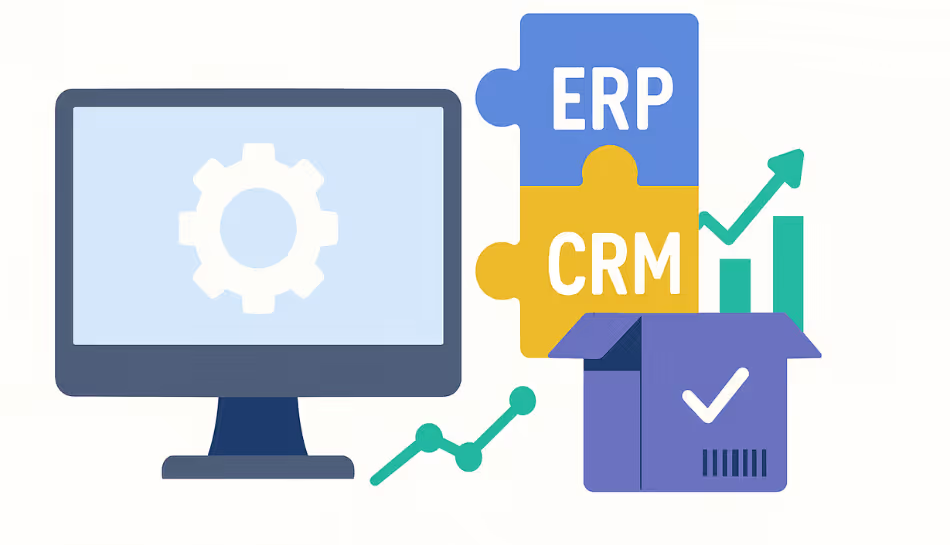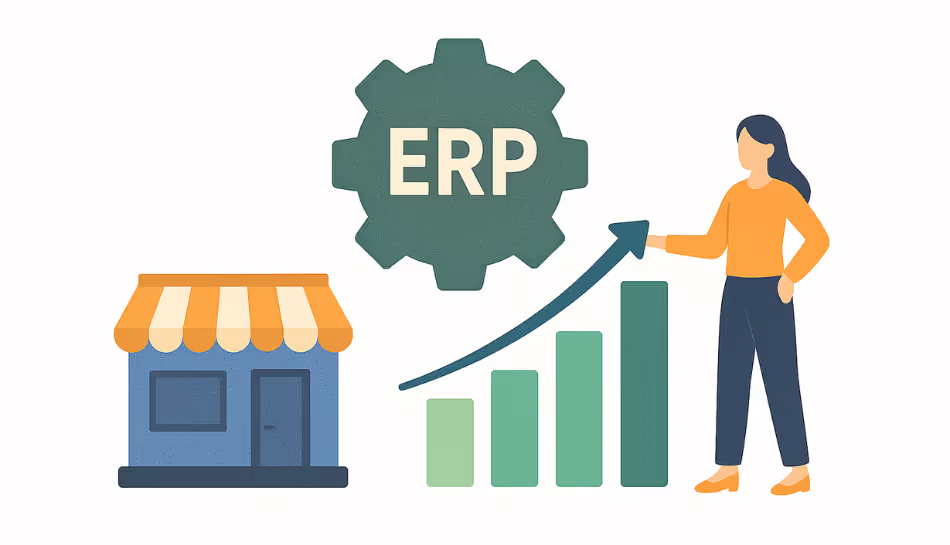For growing businesses, managing inventory and maintaining customer relationships go hand in hand. That’s why many organizations now seek ERP software with CRM and inventory features built in. Rather than juggling multiple systems, an integrated ERP brings warehouse management, inventory tracking, and customer data into one streamlined platform.
If you’re considering investing in an integrated ERP software with inventory and CRM for SMEs, here’s what to know before making your decision, and how to compare the leading options in the market.
Why Integration Matters
In today’s competitive landscape, siloed systems are inefficient. Businesses need data to flow seamlessly across departments, sales, inventory, warehousing, and customer service. This is where a combined ERP CRM inventory software system proves valuable.
An ERP for inventory management allows businesses to monitor stock levels, forecast demand, and optimize purchase cycles. A CRM system, on the other hand, helps manage customer data, lead pipelines, and after‑sales support. When both are part of a single platform, it leads to better coordination and decision‑making.
Key Features to Look For
Before choosing any ERP software for inventory and CRM, evaluate the following must‑have features:
- Real‑time Inventory Tracking: Automatic updates on stock availability, reorder alerts, and movement logs
- Warehouse Management: Barcode scanning, bin‑level control, batch tracking, and pick‑pack‑ship workflows
- CRM Integration: Unified customer profiles, sales history, support tickets, and communication records
- Sales & Procurement Sync: Seamless transitions from quotes to invoices to purchase orders
- Analytics & Reporting: Dashboard views that connect sales performance with inventory trends
These capabilities help streamline operations, reduce manual work, and give leadership teams clearer visibility into business performance.
Comparing ERP Systems with CRM and Inventory Features
Let’s break down the types of ERP solutions available for businesses that need both inventory and customer management tools.
- Full‑Suite ERP Platforms: These solutions include everything—finance, HR, CRM, and inventory—under one roof. They’re great for medium to large businesses but can be expensive for smaller companies.
- Modular ERP Systems: These allow businesses to start with just CRM and inventory, then add other modules later. This approach gives SMEs flexibility in both functionality and cost.
- Cloud ERP Systems: Many of today’s ERP for warehouse management and CRM systems are cloud‑based, allowing remote access, regular updates, and lower IT maintenance. These are ideal for fast‑moving, multi‑location operations.
When conducting an ERP CRM inventory software comparison, assess not just the features, but also the system’s usability, scalability, and integration with your current tools.
Best ERP Software for Inventory and CRM (Popular Options to Explore)
- Bigsun ERP: A growing ERP provider known for its easy‑to‑use, scalable platform tailored for SMEs. Bigsun offers integrated modules for inventory, CRM, finance, and more, making it ideal for businesses looking to streamline operations affordably without compromising on features.
- NetSuite ERP: Cloud‑based and highly customizable, with advanced CRM and inventory features.
- SAP Business One: Popular among growing mid‑sized companies looking for robust warehouse and customer solutions.
- Zoho ERP Suite: Known for ease of use and seamless integration across Zoho CRM and inventory modules.
- Odoo: Open‑source and modular, letting you choose only the apps you need, such as CRM and Inventory.
- Microsoft Dynamics 365: Offers deep integrations between sales, customer service, and inventory.
Questions to Ask Before You Buy
Before finalizing your choice, ask the following:
- Does the system support my industry‑specific inventory workflows?
- Can the CRM module handle customer service and sales automation needs?
- Is the software scalable for my growth plans?
- How easy is it to train staff and onboard users?
- What are the ongoing costs, including updates and support?
These questions will help you compare ERP software with CRM and inventory features in a way that aligns with your business goals.
Final Thoughts
Finding the best ERP software for inventory and CRM is not about picking the most expensive or feature‑heavy system. It’s about choosing a platform that helps your team work more efficiently, serve customers better, and manage stock without waste or delays.
With so many ERP options available in 2026, take time to research, test demos, and consider the long‑term ROI. A well‑integrated ERP will not only improve internal coordination but also drive customer satisfaction and sustainable growth.



